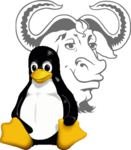Exploring Kubuntu 15.04



Kubuntu Kubuntu is an official Ubuntu community project which releases new versions in step with the rest of the Ubuntu community. Kubuntu ships with KDE's Plasma desktop by default, offering users the latest technology to come out of the KDE project. Kubuntu's most recent release, version 15.04, is the first to ship with Plasma 5 and this is also the first version of the distribution to ship with systemd as the default init technology. The distribution's release announcement states, "Plasma 5, the next generation of KDE's desktop, has been rewritten to make it smoother to use while retaining the familiar setup. The second set of updates to Plasma 5 are now stable enough for everyday use and is the default in this version of Kubuntu."
On Krita:
-
Interview with Griatch
I’ve known about Krita for a long time, I might have first heard about it around the time I started to complement my GIMP work with MyPaint for painting. Since I exclusively draw in Linux, the open-source painting world is something I try to keep in touch with.
-
Hitting the ground running
Today is officially the first day of coding for this year's Google Summer of Code. For the next three months I will be working on bringing animation to Krita. There's a lot of work ahead, but I have a solid plan to work with.
-

- Login or register to post comments
 Printer-friendly version
Printer-friendly version- 1777 reads
 PDF version
PDF version
More in Tux Machines
- Highlights
- Front Page
- Latest Headlines
- Archive
- Recent comments
- All-Time Popular Stories
- Hot Topics
- New Members
digiKam 7.7.0 is released
After three months of active maintenance and another bug triage, the digiKam team is proud to present version 7.7.0 of its open source digital photo manager. See below the list of most important features coming with this release.
|
Dilution and Misuse of the "Linux" Brand
|
Samsung, Red Hat to Work on Linux Drivers for Future Tech
The metaverse is expected to uproot system design as we know it, and Samsung is one of many hardware vendors re-imagining data center infrastructure in preparation for a parallel 3D world.
Samsung is working on new memory technologies that provide faster bandwidth inside hardware for data to travel between CPUs, storage and other computing resources. The company also announced it was partnering with Red Hat to ensure these technologies have Linux compatibility.
|
today's howtos
|









.svg_.png)
 Content (where original) is available under CC-BY-SA, copyrighted by original author/s.
Content (where original) is available under CC-BY-SA, copyrighted by original author/s.

Recent comments
1 year 11 weeks ago
1 year 11 weeks ago
1 year 11 weeks ago
1 year 11 weeks ago
1 year 11 weeks ago
1 year 11 weeks ago
1 year 11 weeks ago
1 year 11 weeks ago
1 year 11 weeks ago
1 year 11 weeks ago